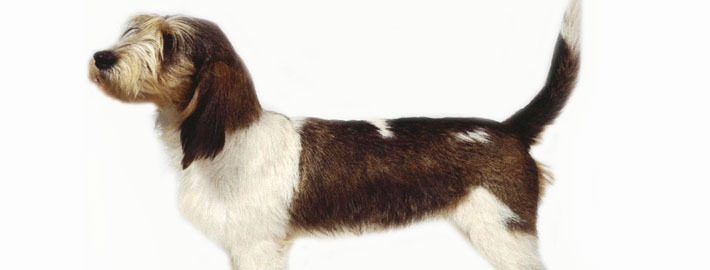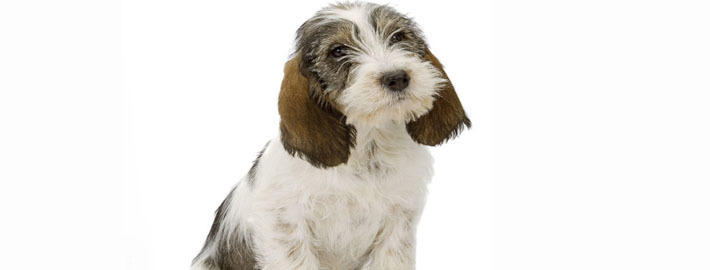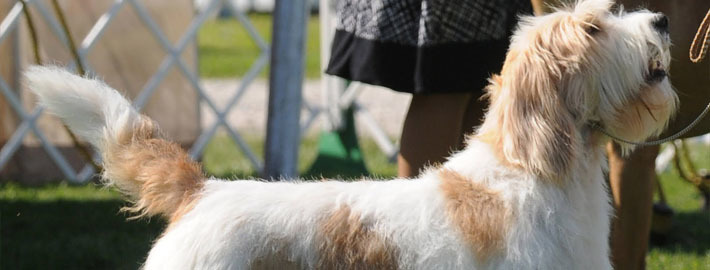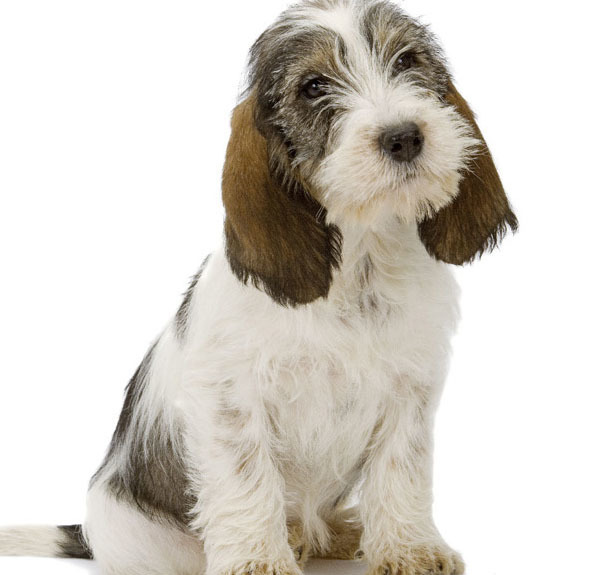What makes the Grand Basset Griffon Vendéen Unique?
Good family dogs and can get along well with other household pets. Will enjoy a good walk or vigorous exercise in the yard or park at least once a day. They are friendly, inquisitive dogs that can be stubborn and they also thrive on attention. Has a long bushy coat that comes in many typical hound colors.
Breed Groups
Page Contents
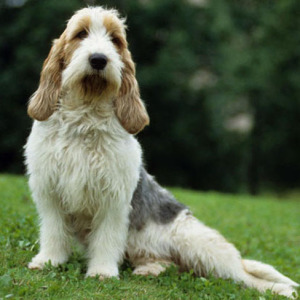
SnapShot
| Size: | Males – 39.3 to 45.7 cm (15.5 to 18 inches) Females – 39.3 to 45.7 cm (15.5 to 18 inches) |
| Weight: | Males – 18.1 to 20 kg (40 to 44 pounds) Females – 18.1 to 20 kg (40 to 44 pounds) |
| Origin: | France |
| Life Span: | 12 – 14 Years |
| Colour: | Fawn & White, Fawn & Black, Tri-color, Black & Tan, Black & White |
| Litter Size: | 4 to 13 puppies, 8 being the most common |
Is the Grand Basset Griffon Vendéen Right For You?
Above all, what characterises this breed and has made them a popular addition to the many breeds is their wonderful temperament. Happy, outgoing hounds, “into” everything, always willing to please and never aggressive. It was these traits that earned the breed its nickname in the early days of introduction into Britain – the Happy Breed.
Grand Basset Griffon Vendéens are good family dogs and can get along well with other household pets. Will enjoy a good walk or vigorous exercise in the yard or park at least once a day. They are friendly, inquisitive dogs that can be stubborn and they also thrive on attention. Has a long bushy coat that comes in many typical hound colors including black and tan, fawn, and various bicolor variants with white including grizzle, gray, black and orange. Tricolor (white, black and tan) dogs are also seen.
In 5 Words
- Lively
- Friendly
- Extroverted
- Active
- Happy
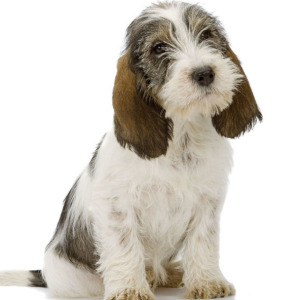
Characteristics
Learn About the Grand Basset Griffon Vendéen
Description
General Description
Grand Basset Griffon Vendeens are often referred to as the happy hound with their oversize ears and expressive features and it is important to us that our dogs are the embodiment of this wonderful breed.
The GBGV is a chap with a sense of humour and delights in joining in with human activity, although, being a true hound, he has a tendency to be hard of hearing when it suits him! He is a canine escapologist; his owner’s garden requires an intensity of attention to boundary maintenance.
Short History of the Grand Basset Griffon Vendéen
The GBGV can be traced back to the 16th century. They originate from Vendee in the west countryside of France. The Griffon Vendeen is the larger ancestor of the GBGV. They were bred slightly smaller to cope with the environment that they were used in, thick undergrowth. There are two varieties of the basset type of Griffon Vendeen, the Grand and the Petit. These two originally occured in the same litters, and it wasn’t until the 1970′s that the cross breeding of these two varieties was forbidden. Today these dogs are still used, as individuals or in packs, to hunt wild boar, deer and to scent rabbit and hare.
Temperament
The Grand Basset Griffon Vendeen is a happy go lucky dog who loves to be kept active. They can be stubborn, independent and bold but they are always willing to please. They are not ideally suited to living in towns, the country life is for them. They get on well with other dogs, children and strangers.
Caring for Your Grand Basset Griffon Vendéen
General Health
The Grand Basset Griffon Vendeen is generally a healthy and carefree breed. Hereditary eye abnormalities include persistent pupillary membranes and retinal folds, neither of which commonly affect vision. There have been a few cases of glaucoma recently reported, a condition which usually results in blindness. Some juvenile animals may suffer from an aseptic meningitis characterized by lethargy, fever and neck or back pain. This syndrome, known as PBGV pain syndrome, varies in severity among affected animals and in rare instances can be fatal. Seizure disorders and epilepsy are infrequently reported within the breed, as are hip dysplasia, patellar luxation and elbow dysplasia. Hypothyroidism, food allergies and skin allergies have also been reported.
Grooming & Bathing
The GBGV does not require a lot of grooming, a weekly groom to remove dead hair and dirt should be sufficient. The areas around the mouth and bottom should be checked and kept clean on a regular basis, some trimming of these areas may be necessary. However for showing the coat should not be trimmed.The GBGV does not require a lot of grooming, a weekly groom to remove dead hair and dirt should be sufficient. The areas around the mouth and bottom should be checked and kept clean on a regular basis, some trimming of these areas may be necessary. However for showing the coat should not be trimmed.
Exercise & Training
This breed is all hound – it needs space and patience and a secure garden, for this is a working breed which will be off on the hunt at a whiff of a rabbit. You will only be left with the bell-like tones as your BGV “gives voice” and careers off into the far distance.

